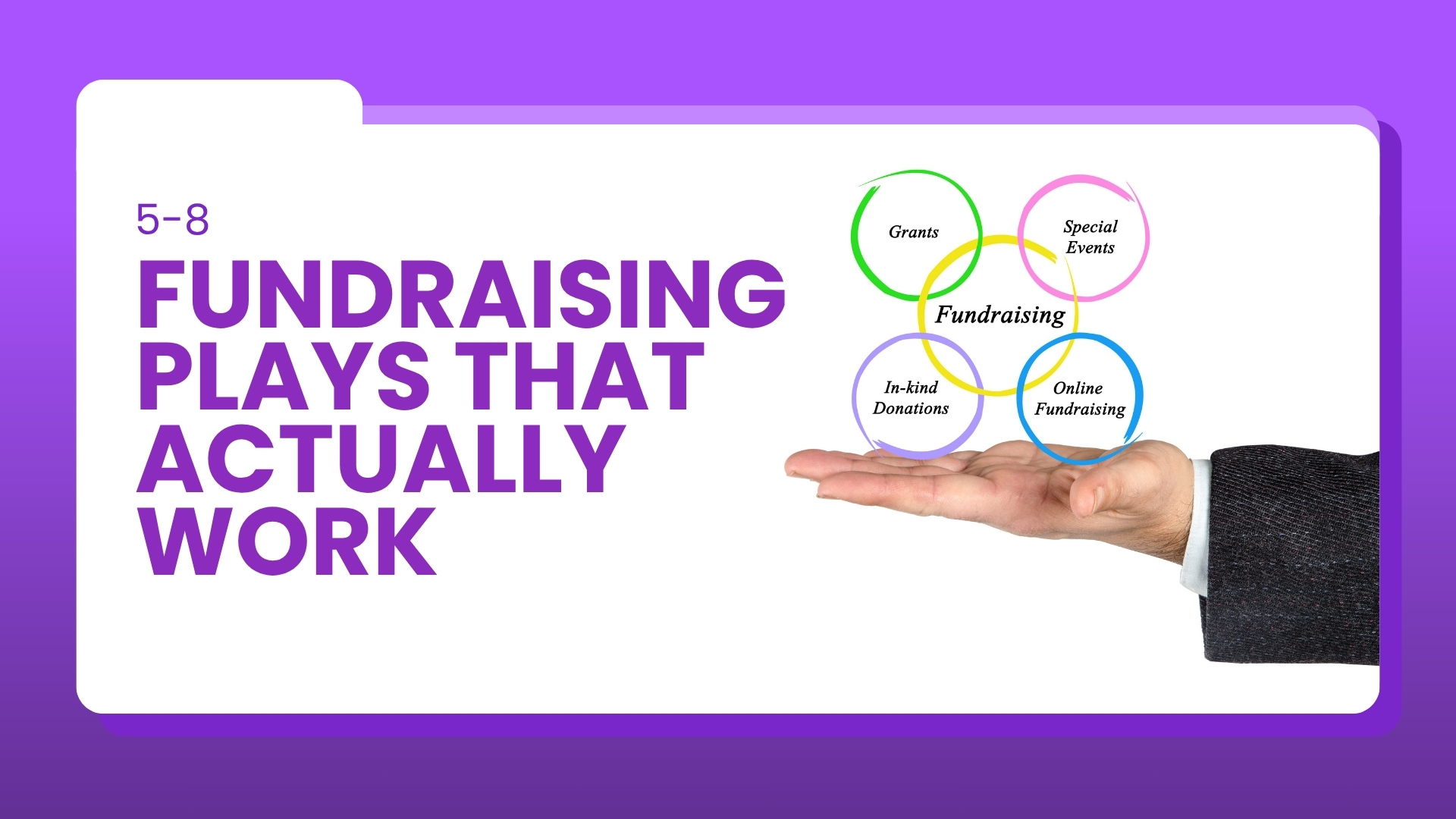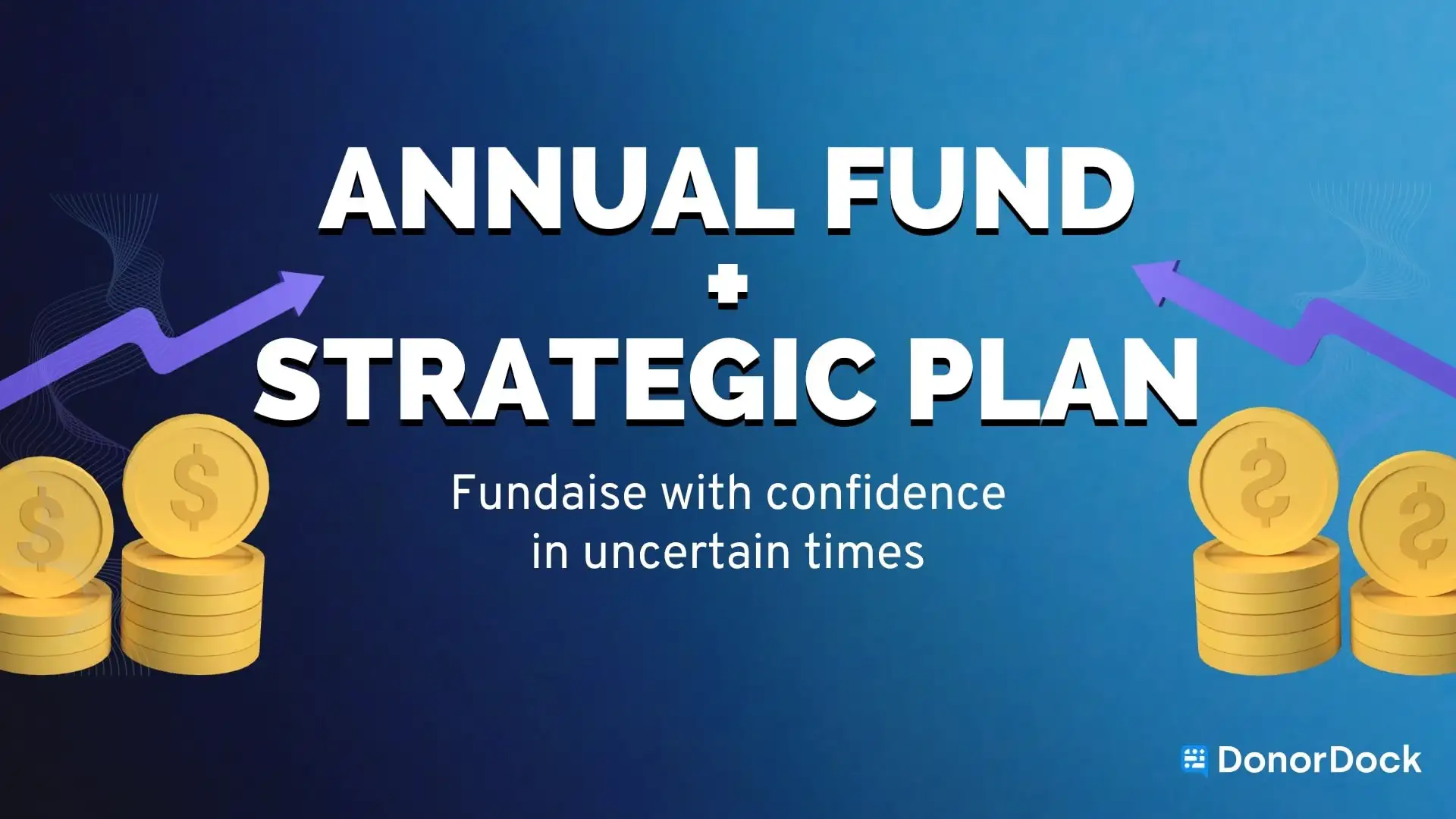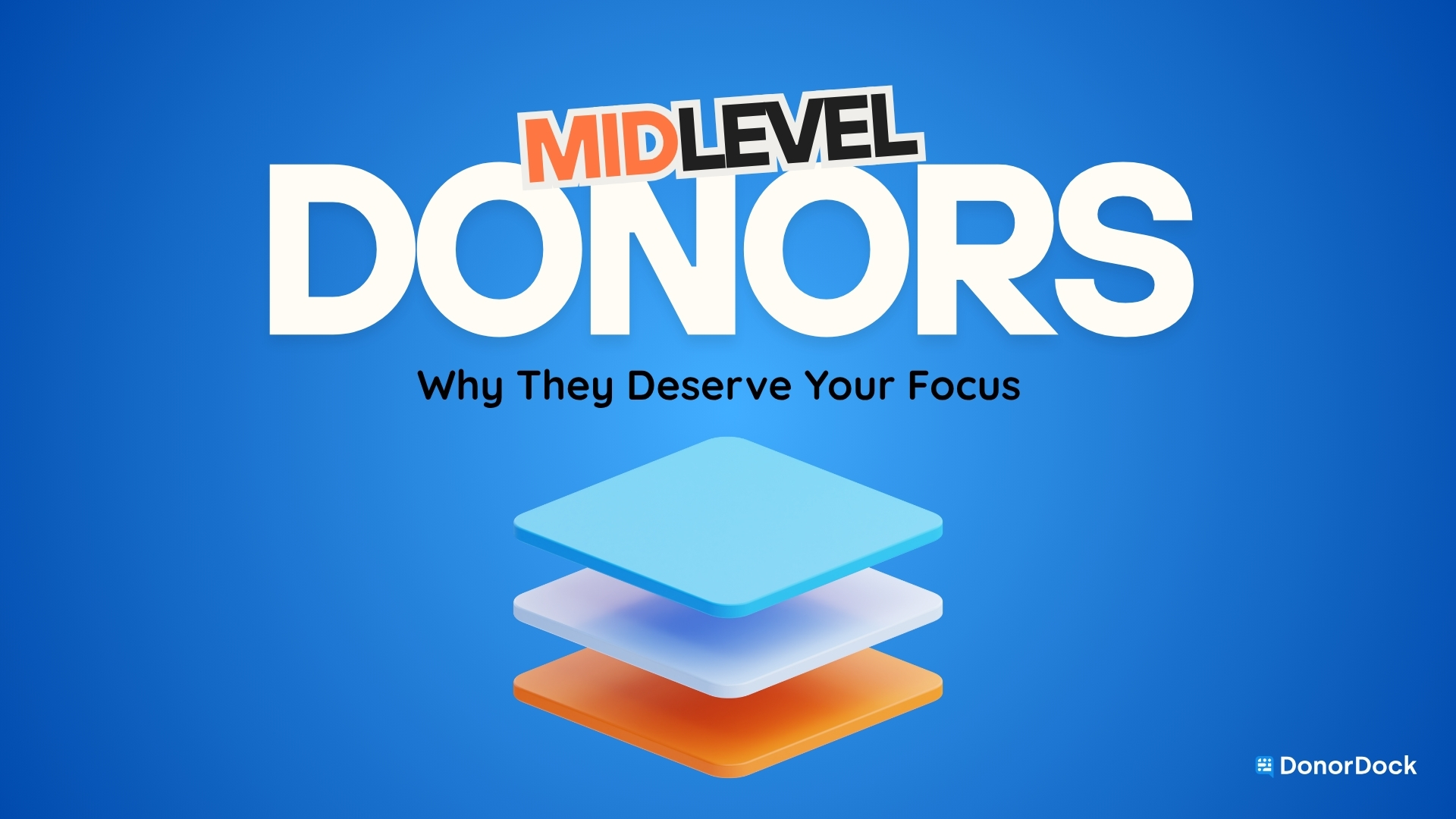If you’re like most small nonprofit teams, your “fundraising menu” reads like a Cheesecake Factory table of contents. Social. Email. Events. Grants. Peer-to-peer. “One more gala?” Your calendar is full, your brain is fried, and donor follow-up slips through the cracks. Time to simplify.
We recommend narrowing your plan to a tight set of 5-8 fundraising plays that actually move the needle. Use the list below to choose your plays, run them for 90 days, and defend your focus with data-backed proof points. More focus, less frenzy.
Why narrow your plan
When capacity is tight, scattered effort costs you real results.
Two data points make the case to focus:
- Donor participation is down and retention is fragile. Recent reports from the Fundraising Effectiveness Project show declines in the number of donors and ongoing pressure on retention. That puts a premium on relationship work with the supporters you already have.
- Digital programs reward simple, repeatable plays. The M+R Benchmarks report shows monthly giving continues to grow as a share of online revenue and that email still drives meaningful income. Translation: consistent email and a strong sustainer program still work.
The 5-8 plays to run for the next 90 days
Here’s a tight “menu” built for small and growing teams. Pick five to eight, then run them consistently for one quarter. Each play is lightweight, repeatable, and relationship-forward.
- Launch or level up monthly giving. Create a simple value prop, a named program, and two nurturing emails per month. Add a monthly option to your donation form. Tie the ask to a steady impact story. For context, monthly giving’s share of online revenue has grown in recent years, per the M+R Benchmarks.
- Send one fundraising email and one stewardship email each week. Keep the cadence steady. One short appeal. One human update or thank-you. Use prewritten story blocks so you can plug and play. Email continues to contribute a meaningful share of online revenue according to M+R, even as individual metrics fluctuate.
- Run a 30-day lapsed donor call sprint.Block two hours weekly. Call 10 to 15 recently lapsed donors. Thank them, ask what matters to them, and make a right-sized invitation. Track notes in your CRM. If a donor prefers email or text, tag that preference and follow up personally.
- Stand up two automated donor journeys. Build a welcome series for new donors and a 60-day post-gift stewardship journey. Keep it human. Short notes, a single story, one clear next step. If you want a head start, see DonorDock’s guide to automated donor journeys and the primer on 6 strategic donor segments.
- Mid-level upgrade mini-campaign. Identify donors who gave two or three times in the past year. Send a personal “you’re part of the core” note and invite them to step up to a specific monthly amount tied to a tangible outcome.
- Volunteer-to-donor conversion. Volunteers are mission-committed. Invite them into giving with a warm, specific monthly ask after a shift. Follow with a text or handwritten card that references something they did. Run this every week, not once a year.
- Ambassador micro-campaign. Recruit 10 insiders to each invite 5 friends to give a first gift of 10 to 25 dollars toward a near-term need. Keep it simple. Provide copy-and-paste language and a graphic. Report back within 7 days with outcomes.
- Event, reimagined as pipeline. If you need an event, treat it as a donor pipeline moment rather than a revenue line item. Shrink production, then maximize one-to-one time with prospects and stewardship with existing supporters. Many advisors note that when you fully load staff time and vendor costs, special events can be among the most expensive dollars you raise. For perspective, see Nonprofit Quarterly’s take on the true cost of benefit events.
Pin this on the wall: “Trim the menu. Run the plays. Review the scoreboard. Repeat.”
How to choose the right plays for your shop
Use this simple filter to pick your 5-8:
1) Mission fit
Does the play clearly advance your mission story and resonate with your community? If it’s not aligned, it’s noise. For a deeper dive on staying mission-true, bookmark DonorDock’s “Fundraise Your Way.”
2) Relationship impact
Will it help you keep the donors you already have? With donor counts and retention under pressure, choose plays that create more human touchpoints and second gifts. The Fundraising Effectiveness Project offers helpful context on retention trends.
3) ROI vs. effort
Score each idea on a 1 to 5 scale for projected net revenue this quarter and required effort. Pick the highest combined scores. If a beloved activity falls low on ROI and high on effort, pause it.
4) Capacity reality
Be honest about your team’s energy. A ruthless elimination of more is a gift to your future self. If you need a focusing framework, try a single WIG, or Wildly Important Goal, to anchor your quarter. See: “The Wildly Important Goal.”
Run the plays with a simple weekly rhythm
You don’t need a 40-page plan. You need a steady rhythm that keeps everyone rowing in the same direction.
Monday: 30-minute focus huddle
- Review the quarter’s WIG and your 5-8 plays.
- Identify the one play that needs extra attention this week.
- Assign 3 to 5 lead measures you control, like 15 calls, 2 emails scheduled, 1 story gathered.
Daily: 60 to 90 minutes of protected focus time
Silence notifications. Tackle the highest-leverage donor work first. Keep a public scoreboard, even if it’s a whiteboard.
Friday: 20-minute celebrate and tidy
- Log contacts in your CRM.
- Send 3 quick thank-yous.
- Celebrate one win out loud. Momentum matters.
Proof points to share with your board
- Monthly giving is a growth engine. Its share of online revenue has grown in recent benchmarks, which justifies time spent on sustainers. Source: M+R Benchmarks.
- Email remains a workhorse. Despite softer open and click rates, email still generates a significant share of online revenue.
- Be cautious with big events. They can be valuable for cultivation, but the fully loaded cost can be high compared to other tactics. Use them sparingly and design them to feed your pipeline. Perspective: Nonprofit Quarterly.
- Retention deserves focus. Fewer donors are giving and many are not returning, which makes stewardship and second gifts essential. Context: Fundraising Effectiveness Project.
Tools and templates to make it easier
Pair these DonorDock resources with the plays above:
- Build automated donor journeys without losing the human touch
- 6 strategic donor segments to map engagement
- Fundraise Your Way
- The Wildly Important Goal
Wrap up
You don’t need more tactics. You need a smaller menu and more reps on what works. Pick 5-8 plays, set one clear quarterly goal, and protect daily focus time. Let consistency and stewardship do their quiet work.
DonorDock is built for small and growing fundraisers who want to cut through the noise and focus on what matters most. Start building meaningful donor relationships today. Schedule a Demo













